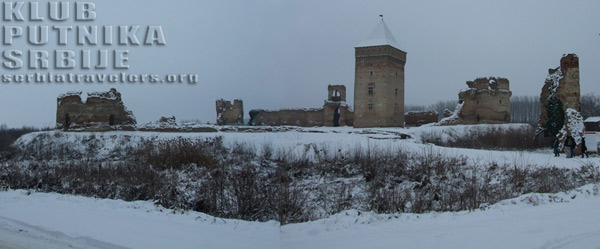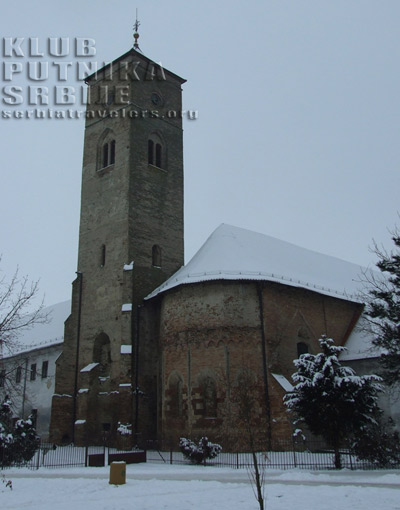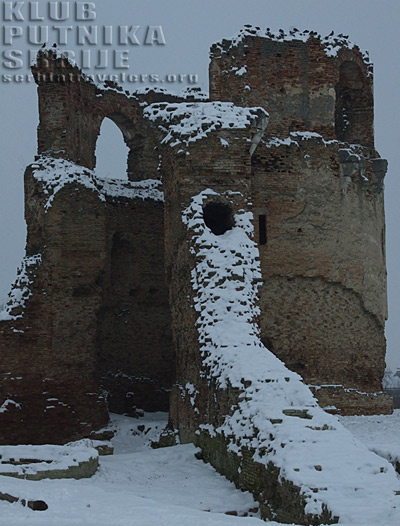Bach Fortress
Bach is a little town of about 20,000 inhabitants, located 24 km north of Backa Palanka. It is home to the Bach Fortress which, although not in the best shape, is still quite an attractive sight, with a tall man tower and some surrounding walls.
The main tower, called "Donzon", is 20 m tall, and you can climb to the top of it by long winding stairway. Recently we have received the information that the fortress is currently undergoing restoration, so it may not be possible to enter the tower unless there are workers on the site. However, the fortress complex can still be entered at any time.
In the town of Bach there is also a very interesting looking Franciscan Convent, founded by the Templars in 1169.
On the bridge on the Mostonga river there is an ancient stone gate, and near the fortress of Bach you will find the ruins of an "Amam", the old Turkish bath.
The Fortress of Bach is said to be the best preserved medieval fortress in Vojvodina.

The History of Bach
Bach is one of the oldest towns in Vojvodina. It was first mentioned in the year 535 a. d., in the emperor Justinian's letter to Katelian, the mitropolite of Skopye. In Salzburg Chronicles from 873 Bach is mentioned as an Avarian fortress. It is also mentioned as a parish center and the archbishop’s residence.
 In the 12th century it was already a famous town, and even the Arabic geographer Al-Idrisi wrote about it in 1154: "Bach (Bakasin) is a famous town among other old, big towns. It has a good market and town squares, craftsmen and Greek scholars".
In the 12th century it was already a famous town, and even the Arabic geographer Al-Idrisi wrote about it in 1154: "Bach (Bakasin) is a famous town among other old, big towns. It has a good market and town squares, craftsmen and Greek scholars".
In 1242 the Mongol invasion reached Bach, and the head of the monastery was killed in a battle. Thanks to the support and efforts of the King Bela IV, the town manages to recover and rise from the dust left after the Mongols.
In 1462 the National Assembly, organized by Hungarian King Matthias, took place in Bach. After the victory in the Battle of Mohacs in 1526, Turks temporarily occupied Bach, to finally conquer it in 1529. Bach then became the center of nahiya (administrative region). Remnants of Turkish occupation can be noticed even today.
By the end of the 17th century Bach was taken over by Austrians, only to be totally devastated in 1704, during the Rakoci Uprising. After that, Bach never regained its old shine, losing its significance to such towns as Sombor and, later, Novi Sad.
Getting to Bach
You can reach Bach by a direct bus from Novi Sad (three buses a day). Also, you can first take a bus from Novi Sad to Backa Palanka (about 20 daily buses) and then take another bus from there to Bach.
Bach Fortress, as well as the town of Bach itself, can easily be seen on a daily excursion from Novi Sad.

What to see in Bach?
First of all, the fortress founded by the Hungarian king Robert Karoly in the 14th century. The fortress is in a pretty bad shape, but the ramparts with three smaller towers and central tower have been preserved. The main tower is 20 m tall, and can be climbed all the way to the top, for some stunning views of the town and surrounding planes. However, since the fortress is currently undergoing construction, you may not be able to enter the main tower unless the workers are on the site.
 Bach is a very old town, so the remainings of ther ancient buildings can be found in many places. When you arrive to Bach, look for the tall tower of the Franciscan Monastery. Near the monastery there is a bridge on the Mostonga river, with a picturesque stone gate. Soon after crossing the bridge you will see the Bach Fortress.
Bach is a very old town, so the remainings of ther ancient buildings can be found in many places. When you arrive to Bach, look for the tall tower of the Franciscan Monastery. Near the monastery there is a bridge on the Mostonga river, with a picturesque stone gate. Soon after crossing the bridge you will see the Bach Fortress.
Near the bridge there are also ruins of a Turkish bath.
The Franciscan Monastery was originally founded by Templars in 1169. After the elimination of this monastic order, in 1312, the church was taken over by the Franciscan monks. The church was built in romanesque and gothic style, with baroque details added later.
The oldest part of the church is the romanesque altar, as well the southern wall with some fragments of gothic frescoes from the 15th century. In the dinning room you can see the copy of "The Last Supper", dating from 1737.
The monastery is still active, and you can ring the door bell and ask the monks to show you around. They are very friendly, and the interior of the church is definitely worth seeing, with an old pipe organ and some potted lemon trees growing in the courtyard.

